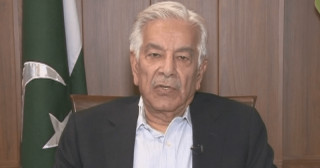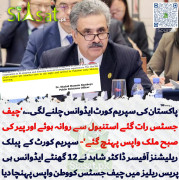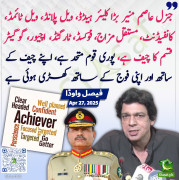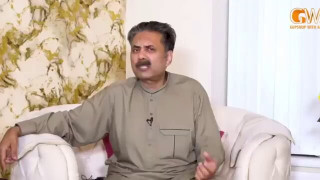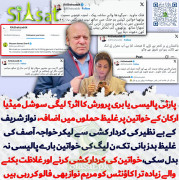Last edited:
You are using an out of date browser. It may not display this or other websites correctly.
You should upgrade or use an alternative browser.
You should upgrade or use an alternative browser.
History of Pashtuns and related people
As this thread is about "history of pashtuns", why dont you share with us some history article about pashtuns?
I have lots of stuff about Pashtuns from the book of the first British General who formed first battalion in the subcontinent to the views of Wali Khan about Pakistan and Quaid e Azam to Taliban, and to the biggest traitor of Pakistan ever Dr Shakil AFRIDI, but none of the references would bring you a good mood so i skip it. Dont tell me to tell you the HISTORY OF PUSHTUNS.
All my objections on your WIKIPEDIA-stuff were Academic. You were twisting history. Presenting the face of history or the version that you liked best. I was only showing you the other side of the picture with proper referencing and that shouldnt bother you. I expect you to prove me wrong by backing your version of history with strong references and authentic historians.
Please be specific, which article was copy pasted from wikipedia?. Point out and also post wikipedia article so that we can compare them.And as for as showing other side of picture, shauq sey karo. But solid analysis karo, ranting nahi.Itne ziada comments kar diye, apna intro tou kara dou, kahan sey taluq he bhai?(Dont be all over the place, just pick up a topic and counter it with your opinions or notify the incorrections with proper sources. They were true or false pathans, is useless discuss and belongs to anthropology, so be productive in your arguements)I have lots of stuff about Pashtuns from the book of the first British General who formed first battalion in the subcontinent to the views of Wali Khan about Pakistan and Quaid e Azam to Taliban, and to the biggest traitor of Pakistan ever Dr Shakil AFRIDI, but none of the references would bring you a good mood so i skip it. Dont tell me to tell you the HISTORY OF PUSHTUNS. All my objections on your WIKIPEDIA-stuff were Academic. You were twisting history. Presenting the face of history or the version that you liked best. I was only showing you the other side of the picture with proper referencing and that shouldnt bother you. I expect you to prove me wrong by backing your version of history with strong references and authentic historians.
Last edited:
Are you claiming that pashtuns have no poetry and literature?About science, medicine, technology stuff the whole pakistan or whole muslim world sucks at it. This is just informative thread, not **** measuring competitionDid Pashtoons ever create a breathtaking piece of poetry or literature; any work in sciences, medicine, engineering or anything that has ever benefited humanity in any shape or form?
Exiled-Pakistani
Minister (2k+ posts)
I am not claiming anything, I am just asking what are the famous and classic works of arts, poetry and literature by Pushtuns, for my information. If you cannot handle a straightforward question then you shouldn't come on live fora; just publish you pidram Sultan bood stories through books and get it over with.
Are you claiming that pashtuns have no poetry and literature?About science, medicine, technology stuff the whole pakistan or whole muslim world sucks at it. This is just informative thread, not **** measuring competition
Then you are in the wrong thread, its not obviously about art, literature and poetry...if you are interested in reading that stuff, then i am not really the best person to recommend poetry stuff. I would say start with ghani khan. This is a simple history thread.I am not claiming anything, I am just asking what are the famous and classic works of arts, poetry and literature by Pushtuns, for my information. If you cannot handle a straightforward question then you shouldn't come on live fora; just publish you pidram Sultan bood stories through books and get it over with.
Exiled-Pakistani
Minister (2k+ posts)
Thank you; that will do for now.
Then you are in the wrong thread, its not obviously about art, literature and poetry...if you are interested in reading that stuff, then i am not really the best person to recommend poetry stuff. I would say start with ghani khan. This is a simple history thread.
perfect janwer
Councller (250+ posts)
we r proud to be muslim with israeli blood.Israeli History of Pashtuns:
The Pashtuns or Pathans are the worlds largest patriarchal ethnic group in existence with an estimated population of around 40 Million distributed in present day countries of Pakistan, Afghanistan, UAE, Iran, UK, USA and India with the largest population in Pakistan that is approximately 28 Million.
A lot of research has been done on the origin of Pashtuns. Taaqati-Nasiri, a book that records historical traces of Pashtuns, states that in the 7th century a people called the Bani Israel settled in Ghor, southeast of Herat, Afghanistan, and then migrated south and east. These Bani Israel references are in line with the commonly held view by Pashtuns that when the twelve tribes of Israel were dispersed the tribe of Joseph, among other Hebrew tribes, settled in the region. [8] Hence the largest tribe of Pashtuns i.e. Yousuf Zai in Pashtu translates to the sons of Joseph. A similar story is told by the Iranian historian Ferishta. (9)
The Pashtuns have been living in the Afghanistan area for over 2,000 years. Their language Pashtu/Pakhto borrows widely from the Arab-ized Persian of their neighbors (now Iran), yet it was a purely spoken dialect. There was no Pakhto/Pashtu written script whatsoever, the first Pashtu book appearing about the 1500s. Hence the traditions, customs, tribal genealogy and law orally transferred from father to son. The first book on Pashtun genealogy, the Makhzan-al-Afghani was written in 1613, and contained for the first time a printed table of descent from Abraham to the Pashtun tribes, through the tribe of Binyamin or Benjamin. While the book was not accepted initially by British historians, modern historians consider it the most accurate account as compared to the other theories proposed by classical historians.
Interestingly, the word Zionist is created from the mountains of Jerusalem which are called Zion. Similarly the language of the Pathan tribesmen is called Pashtu, and its speakers call themselves Pashtun, from the Persian word Pasht which means back of the mountain so in reality Pashtun is a person who lives in the mountains. The mountains the Pathans have been living in after exile are called the Suleiman (Solomon) mountains. The Jews/Bani Israel from Russia also claim to be Mountain Jews and are said to be from the same exile.
The word Pathan is a Pashto written form of the original word Pithon, the great grandson of King Saul. (10)
Kashmir was under direct control of the Durrani Afghan Empire in the 1800s, and the majority of the population there were the Yousuf Zai Pashtuns who had moved eastward from Peshawar. They were living in Kashmir in great numbers, about 600,000 families who were later forcibly subdued for about 40 years by the Sikhs. (11)
Dr. Bernier, A French traveler in the frontier villages of Kashmir around the 1880s remarked on the striking physical similarity of the locals with Jews. (12) He noted that their expressions and manners were distinguishable from the other people in this land. He finally adds that You are not to ascribe what I say to mere fancy, the Jewish appearance of these villagers having been remarked by our Father, the Jesuit, and some other Europeans long before I visited Kashmir.
The Jesuit Dr. Bernier points to is Dr. Joseph Wolff who says I was wonderfully struck with the resemblance of the Youssoufszye (sons of Joseph) and the Khyberi, two of their tribes, to the Jews. (13) Moorcroft also says of Khyberis They are tall, and of singularly Jewish cast of features they have been named by themselves Beni Israel, children of Israel from time immemorial.
Bernier was also referring to George Forster who wrote in 1808 On first seeing the Kashmirians in their own country I imagined from their garb, the cast of their countenance which was long and of a grave aspect, and the forms of their beard, that I had come among a nation of Jews. (14)
Colonel G. Malleson of the British Army did not believe that the Afghans were Beni Israel, but commented on the issue of physical features This no doubt has its weight. (15)
A British army officer summed up the emotional behavior of a Pashtun:
Even when he leaves his native heath behind he takes his manner with him. He will come down, a stalwart manly looking ruffian with frank and open manners, rather Jewish feature He is certain to be filthy and he may be ragged, but he will saunter into a viceregal durbar (Royal court) as proud as Lucifer and with the air and manner a diplomatist might envy. Not in the least like any Indian subject. (16)
Pashtuns follow peculiar customs like:
1. Passover Practice of sacrificing an animal and smearing the doorway to avert death and calamity
2. Placing the sins of the people upon a heifer or goat which is driven out in the wilderness in the manner of the biblical scapegoat
3. Stoning to death of blasphemers
4. Periodical distribution of land by lot (17)
5. The rites of circumcision and purification
These were all given in the Book of Leviticus of the Bani Israel, and modern Muslim historians like Dr. Azmat Hayat Khan accept them as indicators, if not proof of their Israelite heritage. [18] They are the only tribes in the area to practice all of these customs, as the ancient Bani Israel did 2,300 years ago.
Likewise, if anyone travels in the local bus transport of the Pakistani Pashtun areas, he or she would see fascinating art works in their buses but strikingly all these art works have Israelite origin, these peculiar diagrams include:
1. Peacocks (Torah was written with peacock feathers)
2. The Symbolic ark
3. The Mogen David or the Star of the David also found in the Israeli flag
4. Tree of Life of Kaballah
5. Fish of the Sabbat/Shabbos
6. The heart shape lamp of the Sabbat
7. Number of Leaf petals signifying Kaballah practices.
Similarly many Hebrew inspired names of people, tribes and places are commonly found in Pashtuns and Pashtun areas of Pakistan/Afghanistan. Some tribes with visible similarities with Hebrew names are:
1. Yousuf Zai Sons of Joseph
2. Gadoon Gad
3. Rabbani Reuben
4. Abdali or Naftali Naphtali
5. Shinwari Simeon
6. Zamand Zebulun
7. Levani Levi
8. Afridi & Afandi Ephraim
9. Pathan Pithon
The popular places that trace their origin in Hebrew are:
- Koh-e-Suleiman Solomon Mountains
Takht-e-Suleiman Throne of Solomon (the highest peak in Solomon mountains)
Afghanistan Afghana (the grandson of King Saul)
Kohat a town in NWFP, Pakistan, means assembly in Hebrew and it is also the name of the second son of Levi and father of Amram.
Zabul A province in present day Afghanistan, in the days of Mahmood Ghaznavid the whole region of Afghanistan was known as Zabulistan Zebulun was one of the sons of Prophet Jacob (AS).
Khyber A Jew Fort in Arab in the time of Prophet Muhammad (SAW) and a place on Pakistan/Afghanistan border.
Peshawar The Capital of NWFP province of Pakistan PESH means the Pass and HAWAR means City i.e. The City after the Pass. Peshawar is a short drive from Khyber Pass. A Place named Habor is mentioned in Torah as the place of the exile of the tribes.
Gozan The historical name of Amu River in Afghanistan, hence the Torah says: The God of Israel stirred up the spirit of Pul King of Assyria, and the spirit of Tilgath Pilnesser King of Assyria, and he carried them away, even the Ruebenites, and the Gadites, and the half tribe of Manasseh, and brought to Halah, and Habor, and Hara and to the river of Gozan to this day. (Kings II, 17 and 18; Chronicles 1:5)
Kerak A City in Jordan and another in NWFP, Pakistan
Lugar A province in Afghanistan and a Jewish family name; the famous wrestler Lex Lugar.
Kabul in Hebrew Cab means dirty and Bul means city hence a dirty city
Herat The pearl of Khurasan a city in Afghanistan, Hara is one of the places of the exile along with Habor and Gozan i.e. Peshawar and Amu River.
Kash/Kish name of numerous personalities in Chronicles of Hebrew Bible and there is a Dasht-e-Kash north of Helmund, a City of Kash mentioned in map of Afghanistan 1912 of the Library of Congress, USA. There is also a mountain range named Hindu-Kush in Afghanistan/Pakistan and Kash Rod in Nimroz Province of Afghanistan.
Dasht-e-Yahoodi or the Jewish Plain a famous place in Mardan district of NWFP, Pakistan.
Killa Yahoodi or Jewish town a place on Afghanistan border of Pakistan.
perfect janwer
Councller (250+ posts)
bro, ask dr qadeer khan, he consider himself pathan so what is ur problem? if u r not a pathan its ok, every tribe is respectful.lol
I find your statement ironically funny. So Dr Abdul Qadir Khan who is a urdu speaker Mohajir but writes Khan at the end of his name is also a Pathan? Come on man. Dont twist history by manipulating intercultural migration.
perfect janwer
Councller (250+ posts)
bro any information about SURI and LOHANI tribes.
Except that its not true. This bani israeli theory was fabrication of Afghan nobles of mughal court to assert their superiority over mongols, that they are descendents of prophets. It has already been proven wrong, genetically pashtuns are not semetic at all but east indo-iranians with different layers of other indo-iranian groups added to them like bactarians, scythians as well as hephthalites and turks.The popularity of bani israel theory and khalid bin waleed theory is mostly observed in pakistan, propagated mostly through SMS and internet, popular also in Mullah hazrat. In academics and research, these theories have no place at all.we r proud to be muslim with israeli blood.
I have not worked on these yet but just hear the rough outline. Both suris and lohanis are branchis of lodhi tribe which togather with ghilzais come under Mati tribes. Ancient Abode of both tribes was ghor or ghoristan. Suris were numerous before islam and were the ruling tribe of Ghor. The first known pashto poet amir kror also belonged to suri tribe. In mahmud ghaznavi times, the ruler of ghor was Muhammad ibn suri. Shahabudin ghauri was also a suri, a direct descendent of muhammad ibn suri. During Mongol invasion bulk of suri got wiped out, demographics of ghor province has nowadays changed, descendents of mongols, hazaras are settled there. Some of the suris migrated to india and established suri dynasty. Lohanis were given Bihar province by lodhis. Branches of Lohani tribe are Marwat, Mian khel, Daulat khel and tator. These four branches of lohanis now are independent tribes but some of the members of tribe have retained main lohani identity.67 bro any information about SURI and LOHANI tribes.
Last edited:
Last edited:
Last edited:
[h=3]Ali Haider, recipeint of Victoria cross [/h]


© Copyrights 2008 - 2025 Siasat.pk - All Rights Reserved. Privacy Policy | Disclaimer|











